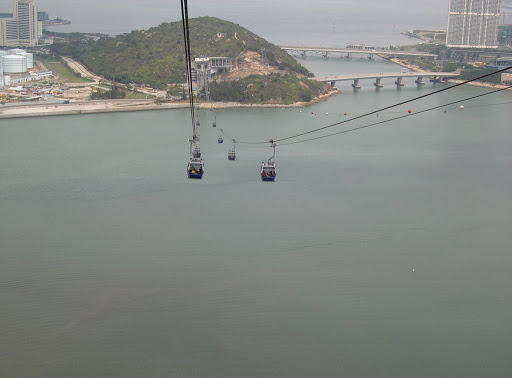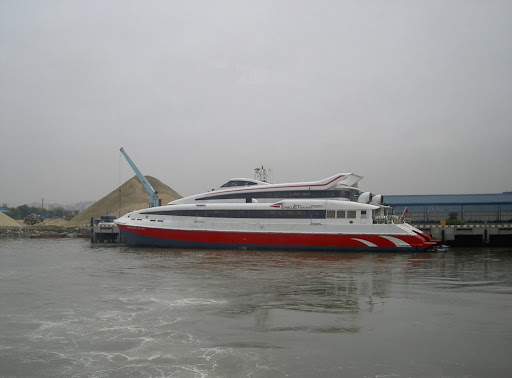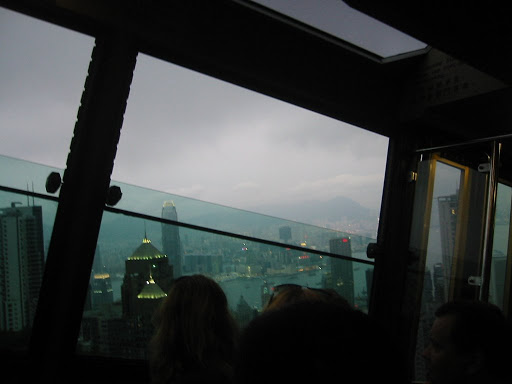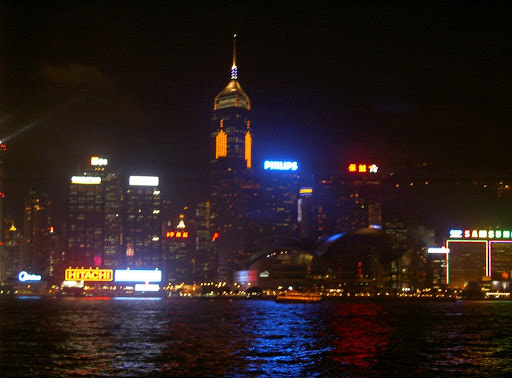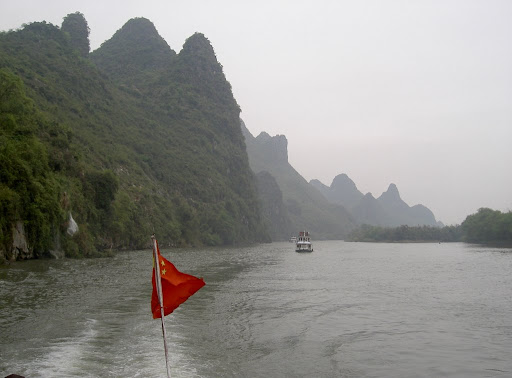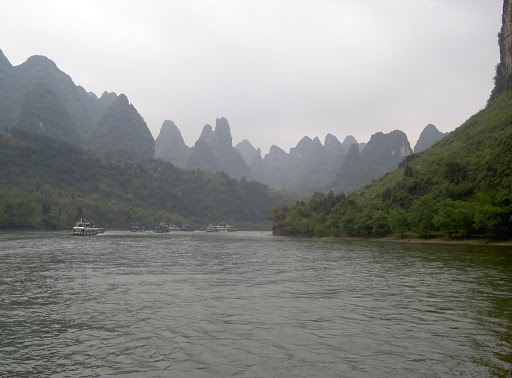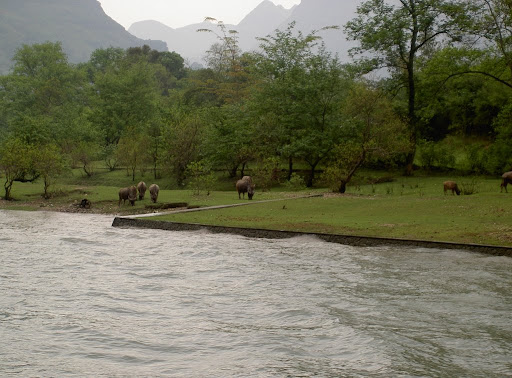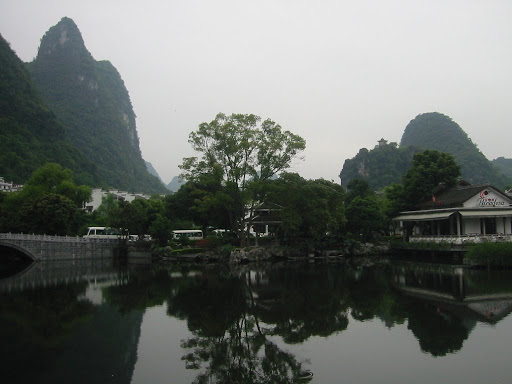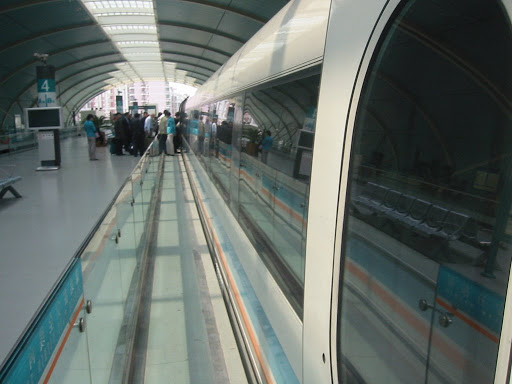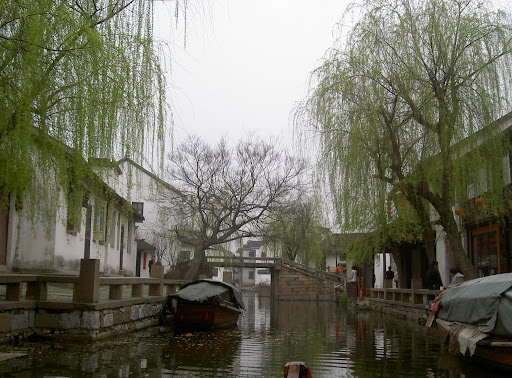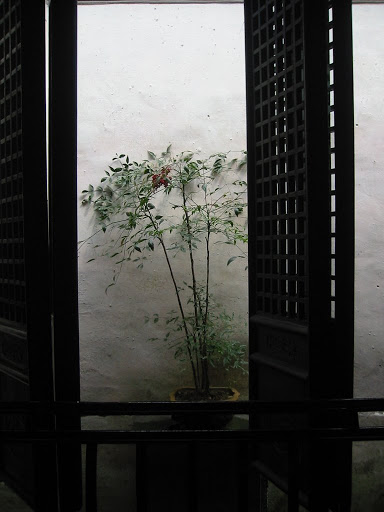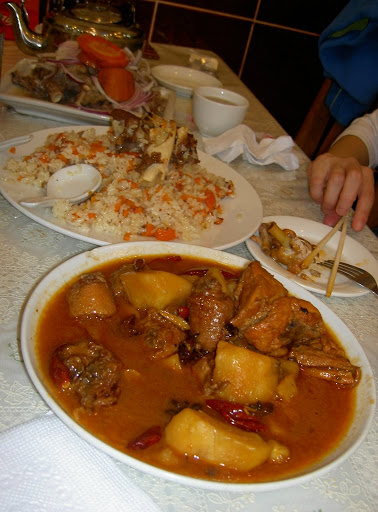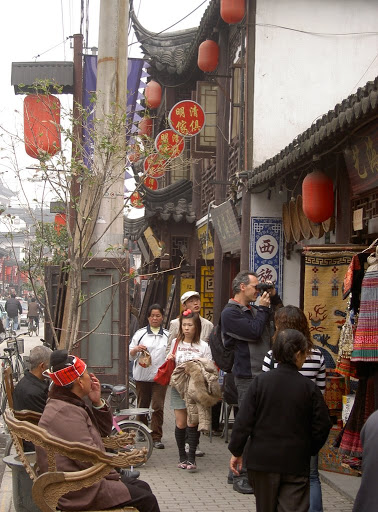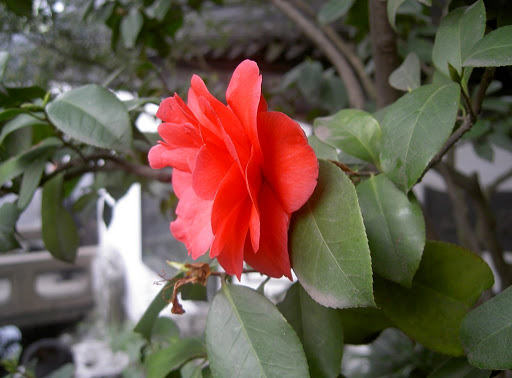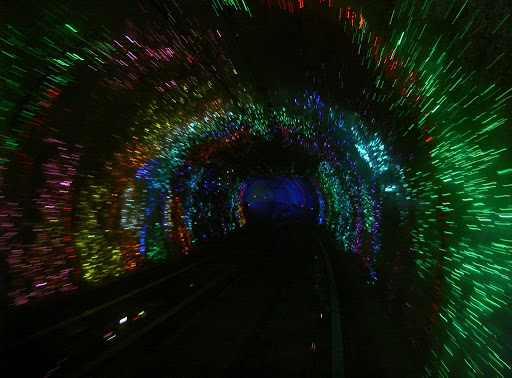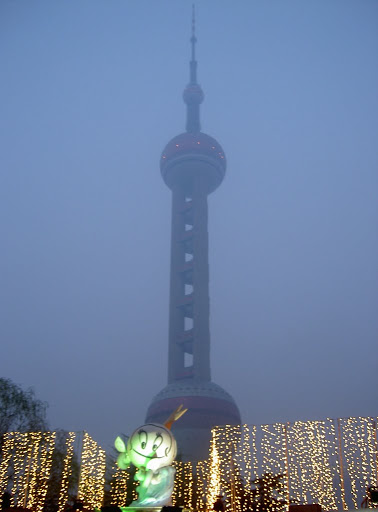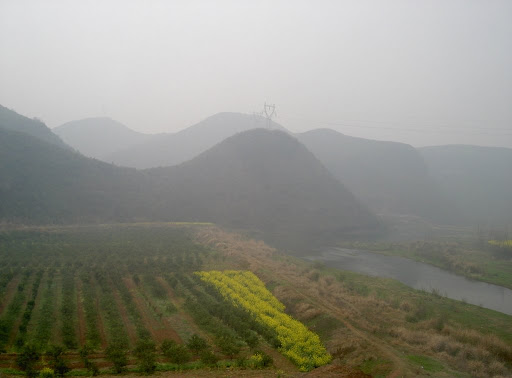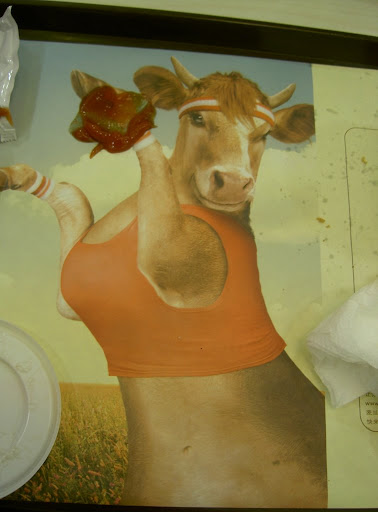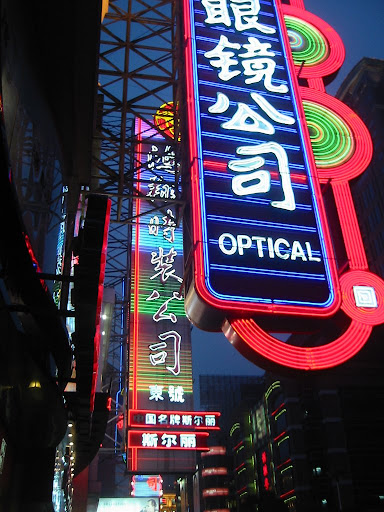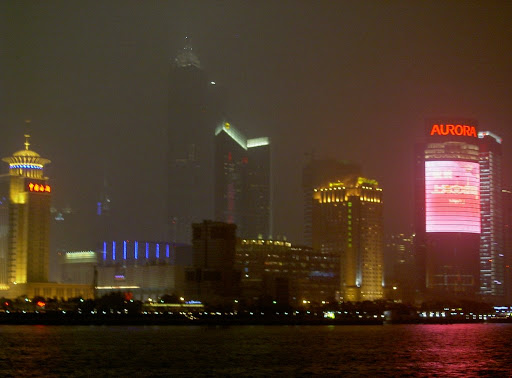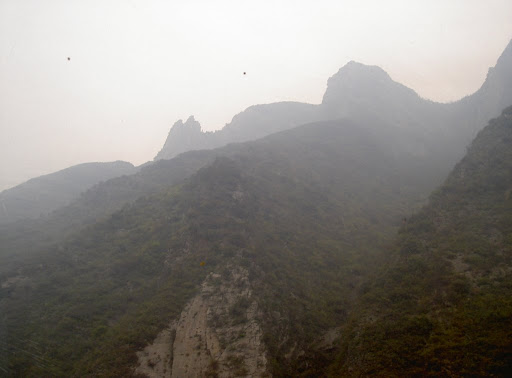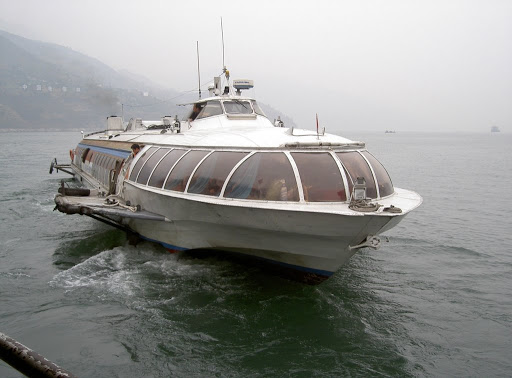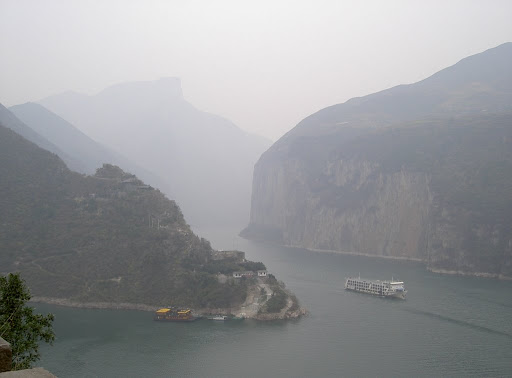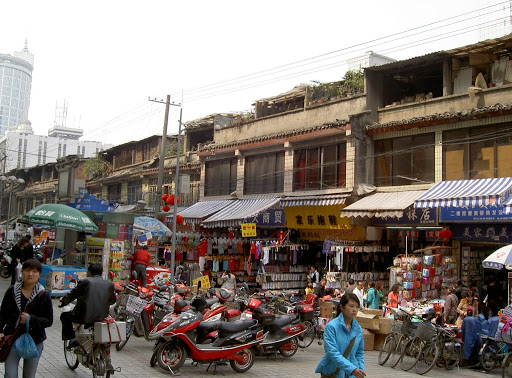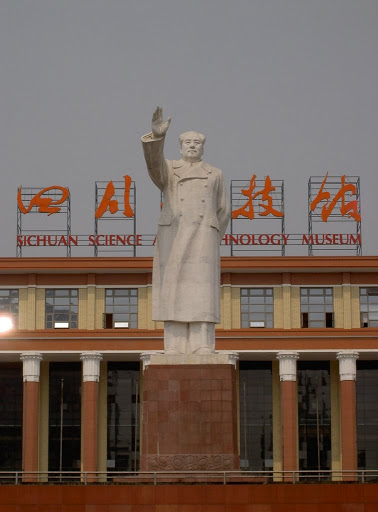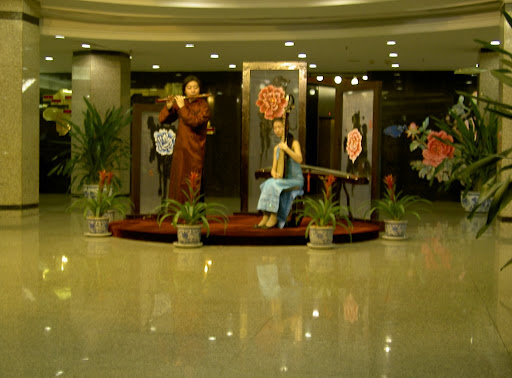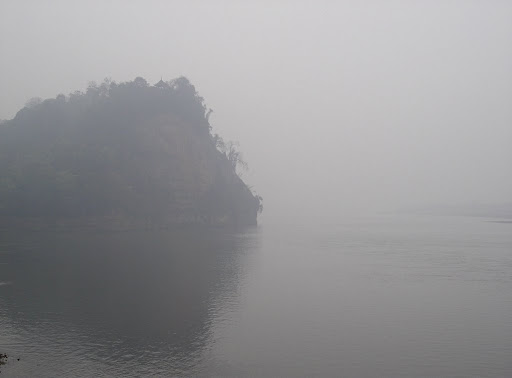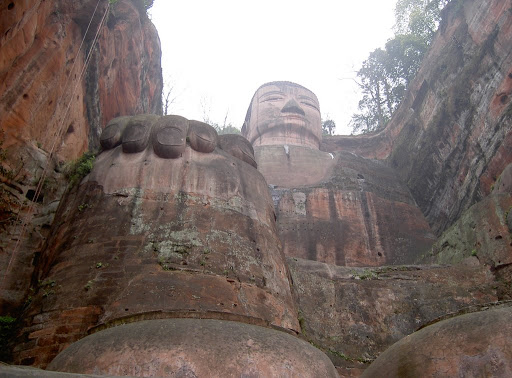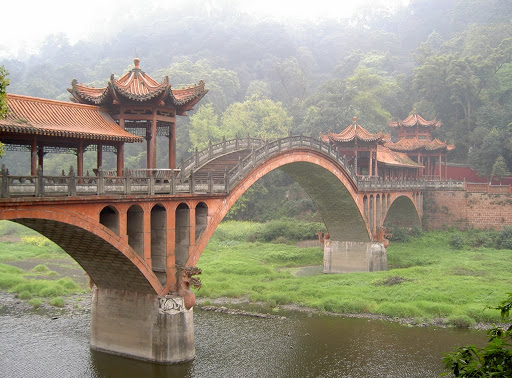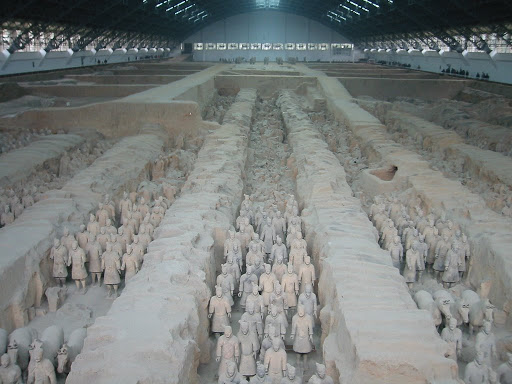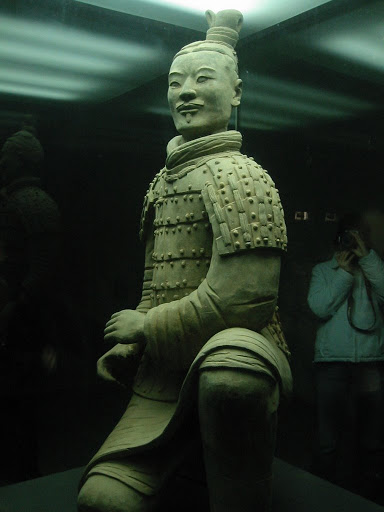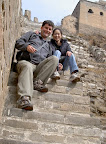
In one corner is Panda 1,
The Bamboo Muncher. In the other is Panda 2,
Backwards Walker. The battle begins with
Walker waddling backwards into
Muncher. They tussle in the bamboo,
Walker on top, no
Muncher, no
Walker,
Muncher. They chase around the enclosure. One climbs a tree, the other pulls him down. Back on the bamboo, the fights nears the moat. In one big movement
Muncher throws
Walker down tumbling into the moat.
Muncher is triumphant, rolling his arms around and doing the Panda Dance!
Our first destination today was the Panda Research Centre outside of Chengdu. We got out of the room late, just in time for breakfast in the hotel. The western buffet was not great, but the local food, including noodles, rice, porridge and dumplings was delicious. Nice to have some fresh fruit too. We are both looking forward to trying more tomorrow.

We walked outside of the hotel in search of a taxi to take us to the Panda Centre. A tout tried hard to get us in his taxi. "No meter. Too far! What do you want to pay?" he asks. "$30" I reply. "Costs more" he responds.
Giving up, we return to the hotel to ask what a good price is. They say $50, but will call in a taxi prepared to use the meter.
The driver takes us through run down suburbs in the process of demolition and reconstruction. Here is real Chengdu street life and it is fascinating. When we reach the Panda Centre the meter reads RMB31. So there, you damn touts!
The Panda Research and Breeding Centre is the most professionally operated of the tourist sights we have yet seen in China. The grounds are green with a wide variety of trees and plants, wide paths and excellent signs.
We thought that, at 10:40am, we were too late to see the Pandas feeding and that they would all be asleep. Not so! At the Panda Adult Enclosure Number 14 we see a few pandas chewing on bamboo or pacing around. Then we walk up to the Red Panda Enclosure Number 2 the small racoon-like red pandas are walking around, or grooming themselves. Quite vain, the red panda.
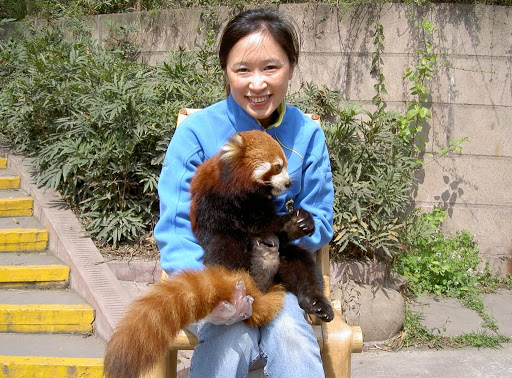
We were given the opportunity to be photographed holding a red panda for RMB50 each. Why not? So we donned the disposable gloves and sat down on the bamboo chair, a red panda placed on our lap. The attendants fed the panda slices of apple in order to attract their attention.
The red panda's tail is long and very bushy. I noticed that, unlike a dog, the nails were transparent and the pink cuticle clearly visible inside. At less than A$10 a pop it was worth it to get up and close with the animals.
No pandas were visible in the Panda nursery, it was probably the wrong time of year. However, the panda kindergarten was buzzing. An attendant was playing with the pandas in their enclosure. While most slept up in the wooden climbing platforms one panda was especially active. He even bit the attendant's leg when he wasn't looking.

Unfortunately, the RMB1000 "donation" to be photographed with a young panda (or RMB400 with a "teenager" panda) was too much for us this time, though at least the money is probably going towards a good cause.
The next enclosure, for teenage pandas, before they become solitary, was where we saw the panda wrestling match. Their antics, like those of the kindergarten pandas, had us entranced for ages. Whatever their real nature, the pandas really are cute to watch.
Also cute were the hordes of young schoolchildren on excursion to the centre. They seemed very curious about me, shouting out "hello" and giggling away. Later, in the onsite Panda Museum, a few wanted to shake my hand or even attack me. Why do kids see me as a punching bag? :)
From the Panda Centre we caught a van to the Wenshu Temple area. The area has been kept in Ye Olde Chinese style with beautiful courtyards filled with craft shops, food stalls and tea houses. But before we entered the courtyard area proper we were tempted outwards by a wonderful smell. The kind of nice smell you usually don't get in China. It was familiar, but what could it be?
A sweet bakery, the counter crowded with waiting customers. We pointed and ordered, not knowing what it was we were getting. Turned out that we had bought incredibly delicious lemon cream puffs, a sweet pastry, cooling minty Chinese dough roles, golden syrup cake and a bag of moreish ginerbread biscuits, also with a mint-cooling aftertaste. We even returned for more at the end of the day, the food was
that good.
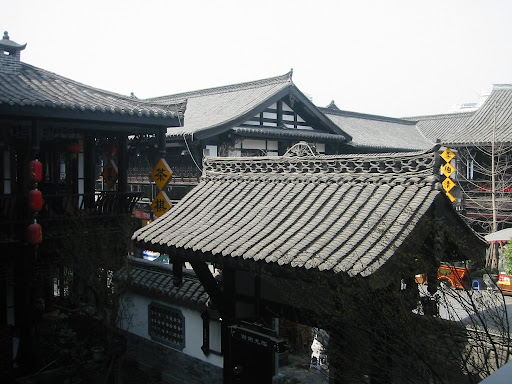
From a little store we ordered "traditional Sichuan buckwheat noodles", squeezed out from the dough right in front of our eyes. I enjoyed the soba-like noodles, while B drank the soup they were cooked in. Besides the noodle stall was an american drawing and selling caricatures. An amusing juxtaposition from Sydney, where it's usually Chinese artists in the market stalls doing the same thing.
The Wenshu Temple and Monastery cost RMB5 each to enter. There was a garden, turtle pond and series of ornate temple buildings. We watched the yellow monks walk into the temple for evening prayers, listed to the drums and chanting as we walked around.
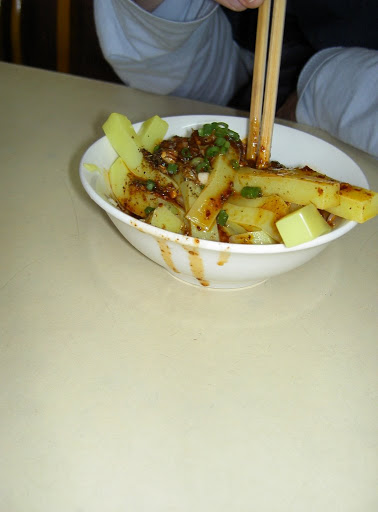
On the way out we stopped by a small shop selling what appeared to thick noodles. Not certain what it really was, except that it was soft, cold in temperature, but extremely hot in spiciness. We could barely eat a couple of spoonfuls before giving up.
Giving up on taxis for the day, we walked back towards the hotel, stopping off at a department store from which the big Mao statue was visible in the distance. As we walked up the lane towards our hotel we passed a dingy but lively area with small shops and restaurants. Thinking that we really should try some more Sichuan cuisine we entered one busy eating house and were directed upstairs. With the help of the phrasebook we ordered a fish (with reduced chilli).
One full table next to us was populated by what looked to be members of the "peasant" class. A couple kept staring at me whenever I wasn't looking their way. It was probably just simple curiosity in this case but I think that some locals have been looking down on B for being seen with a waiguoren (foreigner). Don't blame us if your male preferential policies mean there aren't enough local women!
Our fish and fish head soup came out eventually, much the same as what we ate at Leshan, only much bonier and far less tasty. After the peasants departed we saw a big rat scuttle out for some scraps. It was that kind of place. Hopefully our stomachs will forgive us.
We have one day ahead of us and Chengdu doesn't seem to have many sights within the city proper. Not certain I want to risk a long trip out of town either, they are getting expensive. At least the only thing we need to get up early for tomorrow is breakfast!
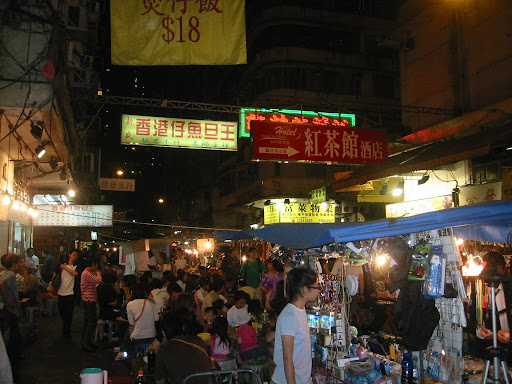 I told B that we should go sightseeing during the weekdays so that the sights would not be crowded with locals. It's the weekend and I don't think any local was sightseeing. No, they were out shopping like us. Such crowds!
I told B that we should go sightseeing during the weekdays so that the sights would not be crowded with locals. It's the weekend and I don't think any local was sightseeing. No, they were out shopping like us. Such crowds! At the Temple Street Market I found a stall selling rip-off Star Wars figurines amongst a wide range of other cartoon and movie characters. One bag held a good selection, except that a figurine inside had a white hand printed on his head. Perhaps a member of Count Dooku's mob?
At the Temple Street Market I found a stall selling rip-off Star Wars figurines amongst a wide range of other cartoon and movie characters. One bag held a good selection, except that a figurine inside had a white hand printed on his head. Perhaps a member of Count Dooku's mob?
